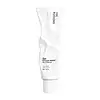What's inside
What's inside
 Key Ingredients
Key Ingredients

 Benefits
Benefits

 Concerns
Concerns

No concerns
 Ingredients Side-by-side
Ingredients Side-by-side

Water
Skin ConditioningButylene Glycol
HumectantGlycerin
HumectantPhenoxyethanol
PreservativePEG-60 Hydrogenated Castor Oil
EmulsifyingTriethanolamine
BufferingCarbomer
Emulsion StabilisingParfum
MaskingDisodium EDTA
Cyclohexane
SolventPentylene Glycol
Skin Conditioning1,2-Hexanediol
Skin ConditioningCentella Asiatica Extract
CleansingSodium Hyaluronate
HumectantPolygonum Cuspidatum Root Extract
AntioxidantScutellaria Baicalensis Root Extract
AstringentCamellia Sinensis Leaf Extract
AntimicrobialGlycyrrhiza Glabra Root Extract
BleachingCaprylic/Capric Triglyceride
MaskingChamomilla Recutita Flower Extract
MaskingEthylhexylglycerin
Skin ConditioningHydrogenated Lecithin
EmulsifyingRosmarinus Officinalis Leaf Extract
AntimicrobialCeramide NP
Skin ConditioningHydrolyzed Hyaluronic Acid
HumectantHydrolyzed Sodium Hyaluronate
Skin ConditioningWater, Butylene Glycol, Glycerin, Phenoxyethanol, PEG-60 Hydrogenated Castor Oil, Triethanolamine, Carbomer, Parfum, Disodium EDTA, Cyclohexane, Pentylene Glycol, 1,2-Hexanediol, Centella Asiatica Extract, Sodium Hyaluronate, Polygonum Cuspidatum Root Extract, Scutellaria Baicalensis Root Extract, Camellia Sinensis Leaf Extract, Glycyrrhiza Glabra Root Extract, Caprylic/Capric Triglyceride, Chamomilla Recutita Flower Extract, Ethylhexylglycerin, Hydrogenated Lecithin, Rosmarinus Officinalis Leaf Extract, Ceramide NP, Hydrolyzed Hyaluronic Acid, Hydrolyzed Sodium Hyaluronate
Water
Skin ConditioningMethylpropanediol
SolventPropylheptyl Caprylate
Emollient1,2-Hexanediol
Skin ConditioningPolyglyceryl-6 Distearate
EmulsifyingLaminaria Japonica Extract
Skin ProtectingEclipta Prostrata Leaf Extract
Skin ConditioningCentella Asiatica Extract
CleansingFicus Carica Fruit Extract
HumectantAcmella Oleracea Extract
Skin ProtectingHydrogenated Lecithin
EmulsifyingAmmonium Acryloyldimethyltaurate/Vp Copolymer
Jojoba Esters
EmollientXanthan Gum
EmulsifyingCetyl Alcohol
EmollientPolyglyceryl-3 Beeswax
EmulsifyingFructooligosaccharides
HumectantBeta-Glucan
Skin ConditioningButylene Glycol
HumectantPanthenol
Skin ConditioningHydrolyzed Hyaluronic Acid
HumectantRaffinose
Skin ConditioningFolic Acid
Skin ConditioningCeramide NP
Skin ConditioningCholesterol
EmollientTromethamine
BufferingPalmitoyl Pentapeptide-4
Skin ConditioningEthylhexylglycerin
Skin ConditioningWater, Methylpropanediol, Propylheptyl Caprylate, 1,2-Hexanediol, Polyglyceryl-6 Distearate, Laminaria Japonica Extract, Eclipta Prostrata Leaf Extract, Centella Asiatica Extract, Ficus Carica Fruit Extract, Acmella Oleracea Extract, Hydrogenated Lecithin, Ammonium Acryloyldimethyltaurate/Vp Copolymer, Jojoba Esters, Xanthan Gum, Cetyl Alcohol, Polyglyceryl-3 Beeswax, Fructooligosaccharides, Beta-Glucan, Butylene Glycol, Panthenol, Hydrolyzed Hyaluronic Acid, Raffinose, Folic Acid, Ceramide NP, Cholesterol, Tromethamine, Palmitoyl Pentapeptide-4, Ethylhexylglycerin
Ingredients Explained
These ingredients are found in both products.
Ingredients higher up in an ingredient list are typically present in a larger amount.
1,2-Hexanediol is a synthetic liquid and another multi-functional powerhouse.
It is a:
- Humectant, drawing moisture into the skin
- Emollient, helping to soften skin
- Solvent, dispersing and stabilizing formulas
- Preservative booster, enhancing the antimicrobial activity of other preservatives
Butylene Glycol (or BG) is used within cosmetic products for a few different reasons:
Overall, Butylene Glycol is a safe and well-rounded ingredient that works well with other ingredients.
Though this ingredient works well with most skin types, some people with sensitive skin may experience a reaction such as allergic rashes, closed comedones, or itchiness.
Learn more about Butylene GlycolCentella Asiatica Extract (Centella) is derived from an herb native to Southeast Asia. It is famous for its anti-inflammatory and soothing properties.
Centella is rich in antioxidants and amino acids, such as Madecassic Acid and Asiaticoside.
Studies show the compounds in centella help with:
The combination of all these properties makes centella effective at soothing, hydrating, and protecting the skin.
Other great components of centella include Vitamin A, vitamin C, several B vitamins, and Asiatic Acid.
Fun fact: Centella has been used as a medicine and in food for many centuries. As a medicine, it is used to treat burns, scratches, and wounds.
Learn more about Centella Asiatica ExtractCeramide NP is a type of ceramide and formally known as ceramide 3.
Ceramides are intercellular lipids naturally found in our skin that bonds dead skin cells together to create a barrier. They are known for their ability to hold water and thus are a great ingredient for dry skin.
Ceramides are an important building block for our skin barrier. A stronger barrier helps the skin look more firm and hydrated. By bolstering the skin ceramides act as a barrier against irritating ingredients. This can help with inflammation as well.
If you would like to eat ceramides, sweet potatoes contain a small amount.
Read more about other common types of ceramides here:
Ceramide AP
Ceramide EOP
Ethylhexylglycerin (we can't pronounce this either) is commonly used as a preservative and skin softener. It is derived from glyceryl.
You might see Ethylhexylglycerin often paired with other preservatives such as phenoxyethanol. Ethylhexylglycerin has been found to increase the effectiveness of these other preservatives.
Hydrogenated Lecithin is created from the hydrogenation of lecithin (a group of phospholipids). Hydrogenation is a chemical reaction between hydrogen and another element.
This ingredient is an emollient and emulsifier. As an emollient, it helps soften skin by trapping moisture within. As an emulsifier, it prevents oil and water ingredients from separating.
Hydrolyzed Hyaluronic Acid is a form of hyaluronic acid. It is created by the hydrolysis of hyaluronic acid with a high molecular weight. Once created, Hydrolyzed Hyaluronic Acid has a low molecular weight.
Low molecular weight HA has been shown to hydrate and increase elasticity of the skin. Increasing elasticity is also associated with reduction of wrinkle depth.
One study found topical low molecular weight hyaluronic acid may be considered for the treatment of rosacea in the adult population. However, we always recommend speaking with a professional about your skin concerns.
Hyaluronic acids are a humectant. This means they draw moisture from the air. Hyaluronic acids help moisturize, soothe, and protect the skin.
Read more about other common forms of hyaluronic acid:
Learn more about Hydrolyzed Hyaluronic AcidWater. It's the most common cosmetic ingredient of all. You'll usually see it at the top of ingredient lists, meaning that it makes up the largest part of the product.
So why is it so popular? Water most often acts as a solvent - this means that it helps dissolve other ingredients into the formulation.
You'll also recognize water as that liquid we all need to stay alive. If you see this, drink a glass of water. Stay hydrated!
Learn more about Water